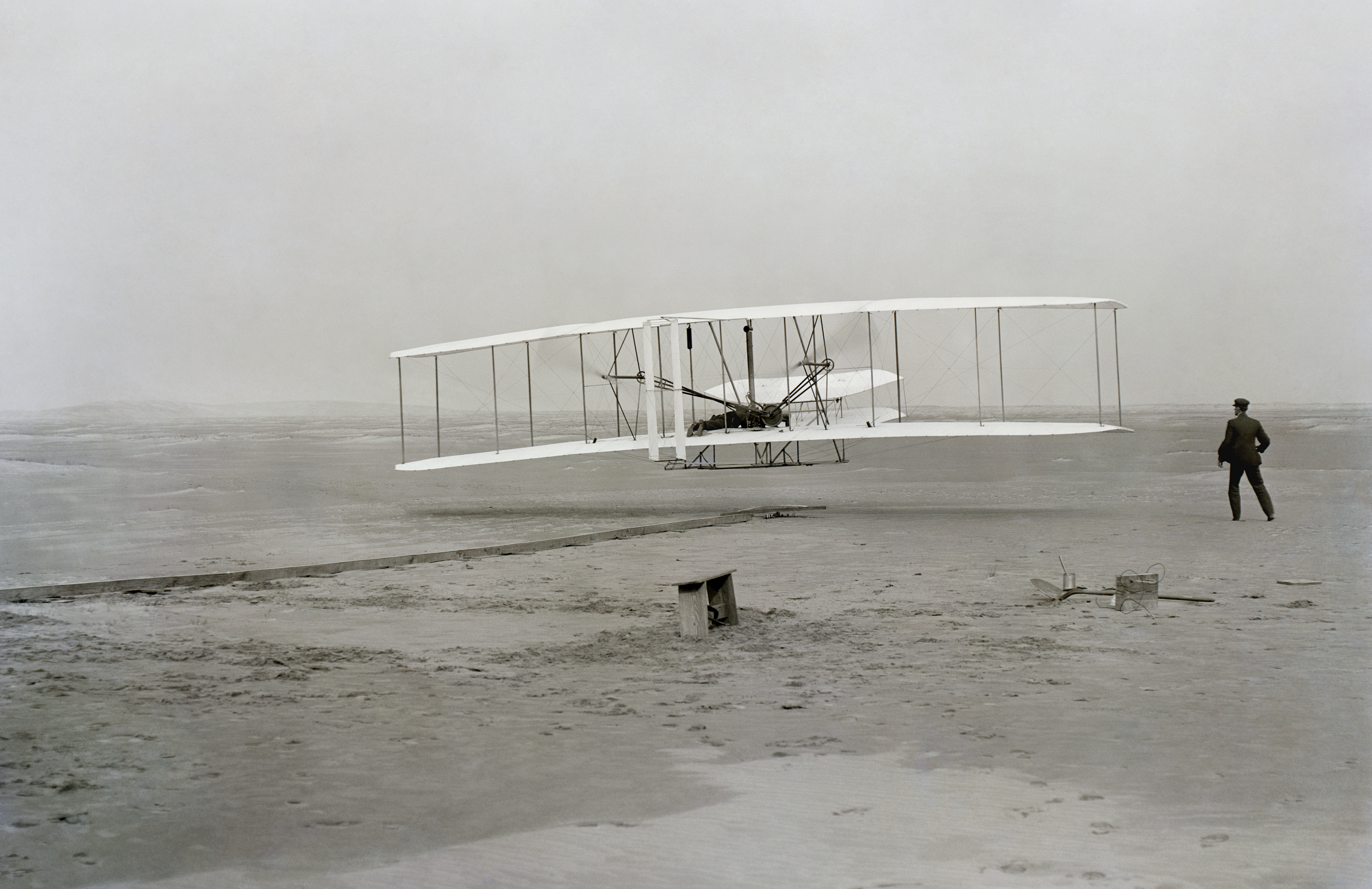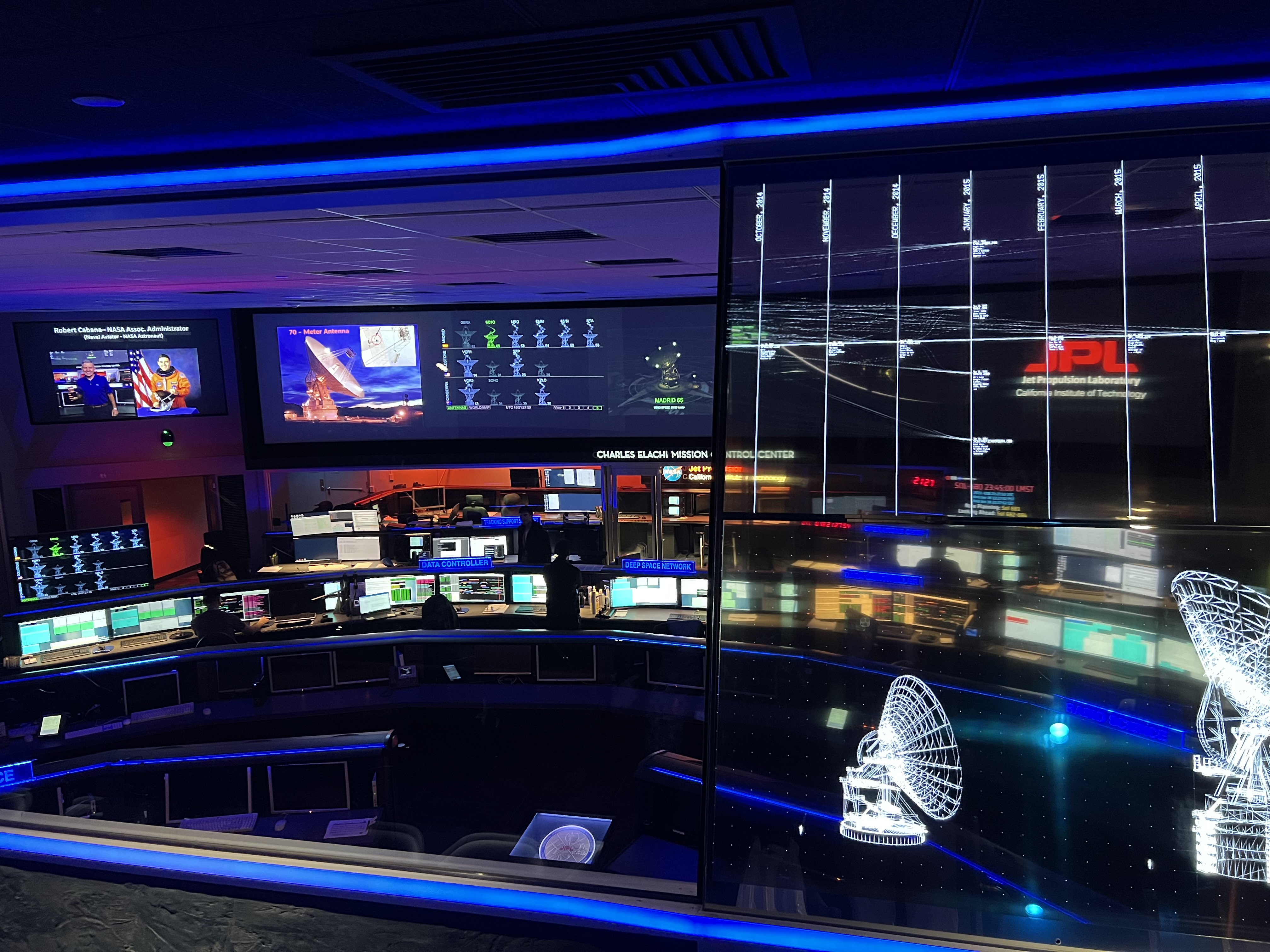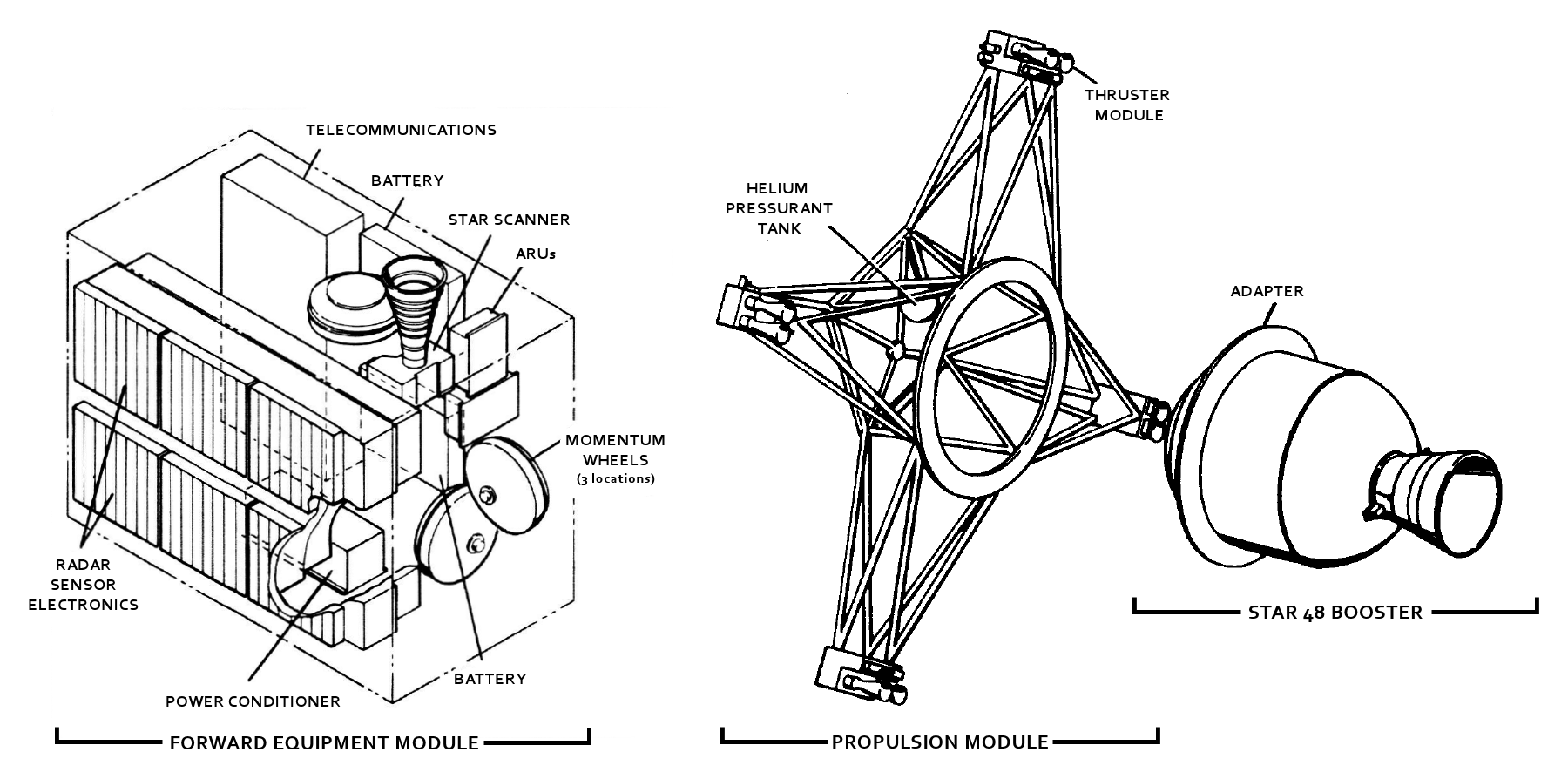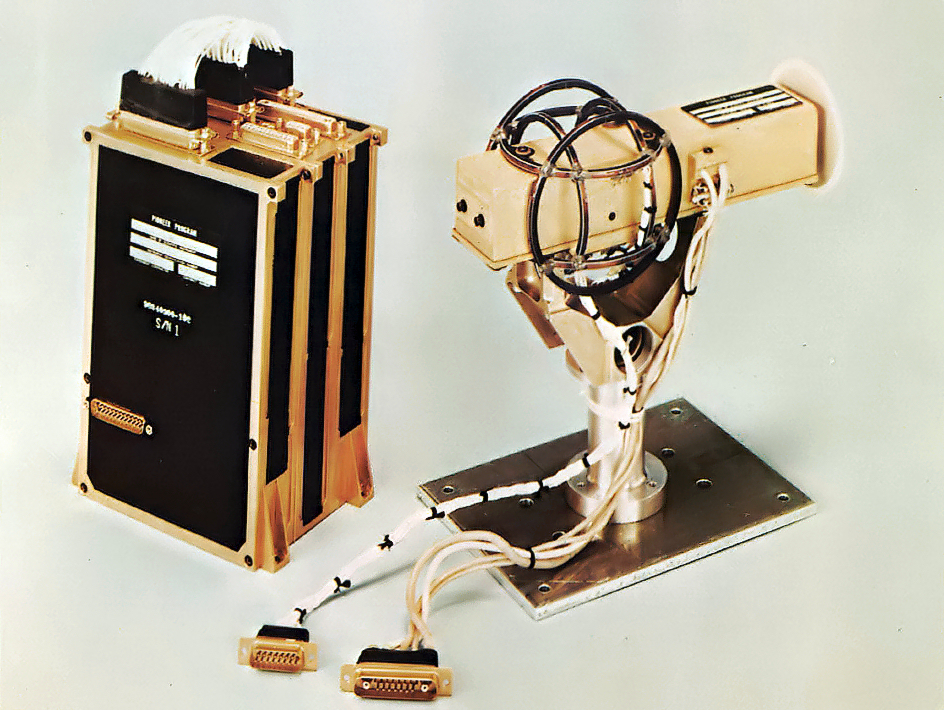|
Spin-stabilisation
In aerospace engineering, spin stabilization is a method of stabilizing a satellite or launch vehicle by means of spin, i.e. rotation along the longitudinal axis. The concept originates from conservation of angular momentum as applied to ballistics, where the spin is commonly obtained by means of rifling. For most satellite applications this approach has been superseded by three-axis stabilization. Use Spin-stabilization is used on rockets and spacecraft where attitude control is required without the requirement for on-board 3-axis propulsion or mechanisms, and sensors for attitude control and pointing. On rockets with a solid motor upper stage, spin stabilization is used to keep the motor from drifting off course as they don't have their own thrusters. Usually small rockets are used to spin up the spacecraft and rocket then fire the rocket and send the craft off. Rockets and spacecraft that use spin stabilization: * The Jupiter-C and Minotaur V launch vehicles used spin-stab ... [...More Info...] [...Related Items...] OR: [Wikipedia] [Google] [Baidu] |
Yo-yo De-spin
A yo-yo de-spin mechanism is a device used to reduce the spin of satellites, typically soon after launch. It consists of two lengths of cable with weights on the ends. The cables are wrapped around the final stage and/or satellite, in the manner of a double yo-yo. When the weights are released, the spin of the rocket flings them away from the spin axis. This transfers enough angular momentum to the weights to reduce the spin of the satellite to the desired value. Subsequently, the weights are often released. De-spin is needed since some final stages are spin-stabilized, and require fairly rapid rotation (now typically 30-60 rpm; some early missions, such as Pioneer, rotated at over 600 rpm) to remain stable during firing. (See, for example, the Star 48, a solid fuel rocket motor.) After firing, the satellite cannot be simply released, since such a spin rate is beyond the capability of the satellite's attitude control. Therefore, after rocket firing but before satellit ... [...More Info...] [...Related Items...] OR: [Wikipedia] [Google] [Baidu] |
Pioneer 10
''Pioneer 10'' (originally designated Pioneer F) is a NASA space probe launched in 1972 that completed the first mission to the planet Jupiter. ''Pioneer 10'' became the first of five artificial objects to achieve the escape velocity needed to leave the Solar System. This space exploration project was conducted by the NASA Ames Research Center in California. The space probe was manufactured by TRW Inc. ''Pioneer 10'' was assembled around a hexagonal bus with a diameter parabolic dish high-gain antenna, and the spacecraft was spin stabilized around the axis of the antenna. Its electric power was supplied by four radioisotope thermoelectric generators that provided a combined 155 watts at launch. It was launched on March 3, 1972, at 01:49:00 UTC (March 2 local time), by an Atlas-Centaur rocket from Cape Canaveral, Florida. Between July 15, 1972, and February 15, 1973, it became the first spacecraft to traverse the asteroid belt. Photography of Jupiter ... [...More Info...] [...Related Items...] OR: [Wikipedia] [Google] [Baidu] |
Pioneer 4
Pioneer 4 was an American spin-stabilized uncrewed spacecraft launched as part of the Pioneer program on a lunar flyby trajectory and into a heliocentric orbit making it the first probe of the United States to escape from the Earth's gravity. Launched on March 3, 1959, it carried a payload similar to '' Pioneer 3'': a lunar radiation environment experiment using a Geiger–Müller tube detector and a lunar photography experiment. It passed within of the Moon's surface. However, ''Pioneer 4'' did not come close enough to trigger its photoelectric sensor. The spacecraft was still in solar orbit as of 1969. It was the only successful lunar probe launched by the U.S. in 12 attempts between 1958 and 1963; only in 1964 would Ranger 7 surpass its success by accomplishing all of its mission objectives. After the Soviet Luna 1 probe conducted the first successful flyby of the Moon on 3 January 1959, the pressure felt by the US to succeed with a lunar mission was enormous, especia ... [...More Info...] [...Related Items...] OR: [Wikipedia] [Google] [Baidu] |
Aerospace Engineering
Aerospace engineering is the primary field of engineering concerned with the development of aircraft and spacecraft. It has two major and overlapping branches: aeronautical engineering and astronautical engineering. Avionics engineering is similar, but deals with the electronics side of aerospace engineering. "Aeronautical engineering" was the original term for the field. As flight technology advanced to include vehicles operating in outer space, the broader term "aerospace engineering" has come into use. Aerospace engineering, particularly the astronautics branch, is often colloquially referred to as "rocket science". Overview Flight vehicles are subjected to demanding conditions such as those caused by changes in atmospheric pressure and temperature, with structural loads applied upon vehicle components. Consequently, they are usually the products of various technological and engineering disciplines including aerodynamics, air propulsion, avionics, materials science, st ... [...More Info...] [...Related Items...] OR: [Wikipedia] [Google] [Baidu] |
Jet Propulsion Laboratory
The Jet Propulsion Laboratory (JPL) is a Federally funded research and development centers, federally funded research and development center (FFRDC) in La Cañada Flintridge, California, Crescenta Valley, United States. Founded in 1936 by California Institute of Technology (Caltech) researchers, the laboratory is now owned and sponsored by NASA and administered and managed by Caltech. The primary function of the laboratory is the construction and operation of planetary robotic spacecraft, though it also conducts Earth-orbit and astronomy missions. It is also responsible for operating the NASA Deep Space Network (DSN). Among the major active projects at the laboratory, some are the Mars 2020 mission, which includes the ''Perseverance (rover), Perseverance'' rover; the Mars Science Laboratory mission, including the ''Curiosity (rover), Curiosity'' rover; the ''Mars Reconnaissance Orbiter''; the ''Juno (spacecraft), Juno'' spacecraft orbiting Jupiter; the ''Soil Moisture Active P ... [...More Info...] [...Related Items...] OR: [Wikipedia] [Google] [Baidu] |
Spin-stabilized Satellite
Spacecraft attitude control is the process of controlling the orientation of a spacecraft (vehicle or satellite) with respect to an inertial frame of reference or another entity such as the celestial sphere, certain fields, and nearby objects, etc. Controlling vehicle attitude requires actuators to apply the torques needed to orient the vehicle to a desired attitude, and algorithms to command the actuators based on the current attitude and specification of a desired attitude. Before and during attitude control can be performed, spacecraft attitude determination must be performed, which requires sensors for absolute or relative measurement. The broader integrated field that studies the combination of sensors, actuators and algorithms is called '' guidance, navigation and control'', which also involves non-attitude concepts, such as position determination and navigation. Motivation A spacecraft's attitude must typically be stabilized and controlled for a variety of reasons. ... [...More Info...] [...Related Items...] OR: [Wikipedia] [Google] [Baidu] |
Star 48
The Star 48 is the largest of a family of solid rocket motors used by many space propulsion and launch vehicle stages, almost exclusively as an upper stage. It was developed primarily by Thiokol Propulsion and after several mergers, is manufactured by Northrop Grumman’s Space Systems division. A Star 48B stage is also one of the few man-made items sent on escape trajectories out of the Solar System, although it is derelict since its use. The Star 48B variant was the PAM-D upper stage used on the retired Delta II rocket. The Star 48 has been used as an upper stage in three- and four-stage launch systems. Overview The "48" designation refers to the approximate diameter of the fuel casing in inches (122 cm); Thiokol had also manufactured other motors such as the Star 37 and Star 30. Internally, Thiokol's designation was TE-M-711 for early versions and TE-M-799 for later ones. Subtypes are given one or more letter suffixes after the diameter number, or a ... [...More Info...] [...Related Items...] OR: [Wikipedia] [Google] [Baidu] |
Star 37
The Star is a family of US solid-propellant rocket motors originally developed by Thiokol and used by many space propulsion and launch vehicle stages. They are used almost exclusively as an upper stage, often as an apogee kick motor. The number designations refer to the approximate diameter of the fuel casing in inches. Three Star 37 stages, and one Star 48 stage, were launched on solar escape trajectories; fast enough to leave the Sun's orbit and out into interstellar space, where barring the low chance of colliding with debris, they will travel past other stars in the Milky Way galaxy and survive potentially intact for millions of years. Star 13 The Star 13 (TE-M-458) is a solid fuel apogee kick motor. It was used on NASA's Anchored Interplanetary Monitoring Platform satellites. Several other versions were developed. Star 13D (TE-M-375) was used on the Syncom 1, Star 13A (TE-M-516) on LES 1/ 2, Aurora (P67-1), Orbiscal (P68-1), Lincoln Calibration Sphere 4, S3-2, Sol ... [...More Info...] [...Related Items...] OR: [Wikipedia] [Google] [Baidu] |
Pioneer 11
''Pioneer 11'' (also known as ''Pioneer G'') is a NASA robotic space probe launched on April 5, 1973, to study the asteroid belt, the environment around Jupiter and Saturn, the solar wind, and cosmic rays. It was the first probe to Exploration of Saturn, encounter Saturn, the second to fly through the Asteroid belt#Exploration, asteroid belt, and the second to fly by Jupiter. Later, ''Pioneer 11'' became the List of artificial objects leaving the Solar System, second of five artificial objects to achieve an escape velocity allowing it to Solar System#Farthest regions, leave the Solar System. Due to power constraints and the vast distance to the probe, the last routine contact with the spacecraft was on September 30, 1995, and the last good engineering data was received on November 24, 1995. Mission background History Approved in February 1969, ''Pioneer 11'' and its twin probe, ''Pioneer 10'', were the first to be designed for exploring the outer Solar System. Yielding to multip ... [...More Info...] [...Related Items...] OR: [Wikipedia] [Google] [Baidu] |
Juno (spacecraft)
''Juno'' is a NASA space probe orbiting the planet Jupiter. Built by Lockheed Martin Space Systems, Lockheed Martin and operated by NASA Jet Propulsion Laboratory, the spacecraft was launched from Cape Canaveral Air Force Station on August 5, 2011 UTC, as part of the New Frontiers program. ''Juno'' entered a polar orbit of Jupiter on July 5, 2016, UTC, to begin a scientific investigation of the planet. After completing its mission, ''Juno'' was originally planned to be intentionally deorbited into Jupiter's atmosphere, but has since been approved to continue orbiting until contact is lost with the spacecraft. ''Juno'' mission is to measure Jupiter's composition, gravity field, gravitational field, magnetic field, and Magnetosphere of Jupiter, polar magnetosphere. It also searches for clues about how the planet formed, including whether it has a rocky core, the amount of water present within the deep atmosphere, mass distribution, and its deep winds, which can reach speeds up ... [...More Info...] [...Related Items...] OR: [Wikipedia] [Google] [Baidu] |
ExoMars Trace Gas Orbiter
The ExoMars Trace Gas Orbiter (TGO or ExoMars Orbiter) is a collaborative project between the European Space Agency (ESA) and the Russian Roscosmos agency that sent an atmospheric research orbiter and the ''Schiaparelli'' demonstration lander to Mars in 2016 as part of the European-led ExoMars programme. A key goal is to gain a better understanding of methane () and other trace gases present in the Martian atmosphere that could be evidence for possible biological activity. The Trace Gas Orbiter delivered the ''Schiaparelli'' lander on 16 October 2016, which crashed on the surface due to a premature release of the parachute. TGO has been orbiting Mars since October 2016 and performing science observations of the planet since April 2018. The ExoMars programme will continue with the ''Rosalind Franklin'' rover in 2028, which will search for biomolecules and biosignatures; the TGO will operate as the communication link for the lander and rover and provide communication for ot ... [...More Info...] [...Related Items...] OR: [Wikipedia] [Google] [Baidu] |
Schiaparelli EDM Lander
''Schiaparelli'' EDM () was a failed Entry, Descent, and Landing Demonstrator Module (EDM) of the ExoMars programme—a joint mission of the European Space Agency (ESA) and the Russian Space Agency Roscosmos. It was built in Italy and was intended to test technology for future soft landings on the surface of Mars. It also had a limited but focused science payload that would have measured atmospheric electricity on Mars and local meteorological conditions. Launched together with the ExoMars Trace Gas Orbiter (TGO) on 14 March 2016, ''Schiaparelli'' attempted a landing on 19 October 2016. Telemetry signals from ''Schiaparelli'', monitored in real time by the Giant Metrewave Radio Telescope in India (and confirmed by ''Mars Express''), were lost about one minute from the surface during the final landing stages. On 21 October 2016, NASA released an image by the '' Mars Reconnaissance Orbiter'' showing what appears to be the lander's crash site. The telemetry data accumulated and r ... [...More Info...] [...Related Items...] OR: [Wikipedia] [Google] [Baidu] |






